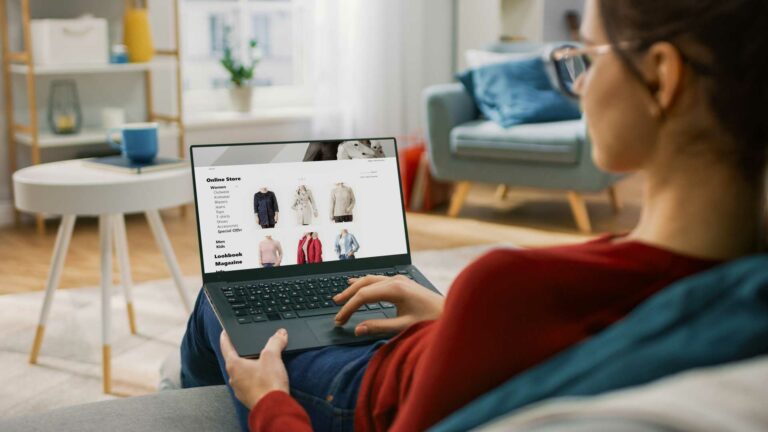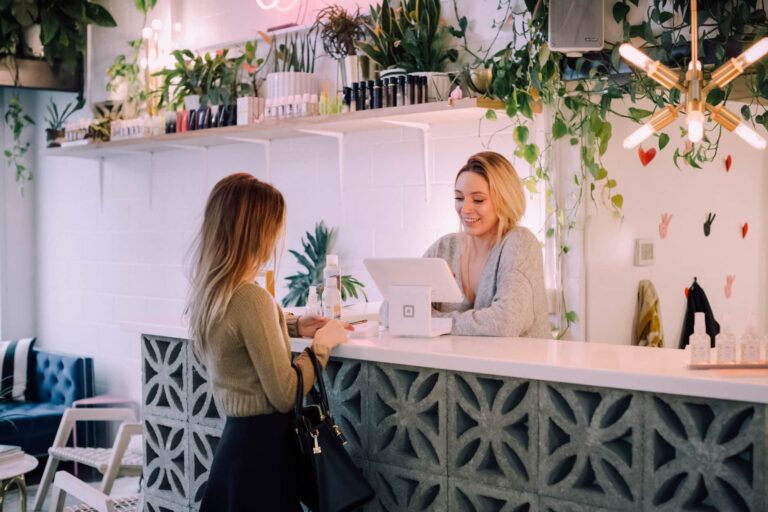Why video retail is not just for Christmas
It seems to be becoming a Christmas tradition. Two years ago, I’m not sure I’d ever used the word “variant”. Now as we start pulling boxes of decorations from the loft, it’s back in our lives as a hot topic and suddenly we’re plunged into a whole new world of confusion. That confusion is keenly felt by many industries and sectors and of course, quickly spreads to the public and consumers in general.

If you’re dependent on selling to consumers and often need to explain and demonstrate your products to educate and inform potential purchasers, like it or not, there’s an immediate challenge you need to overcome. Even without specific restrictions on journeys and the physical shopping experience, it’s no surprise when consumers begin voting with their feet. That choice between making their way to a crowded shopping centre, perhaps via public transport or staying warm and cosy at home whilst browsing from their sofa is approached through a different lens. We’re not talking about full-scale lockdowns here, simply the way people feel based on what they see and hear in the news on a daily basis.
Throw into the mix a new concept, HOGO, and concerns over behaviours increase and so do your own worries over your bottom line. The Hassle Of Going Out (HOGO) is a real phenomenon. I speak from personal experience. This isn’t just about shopping. It’s everything involved with setting foot outside the home and interacting with real people. There’s testing, mask-wearing and that general sense of “why are you standing so close to me” that has seeped into our consciousness. It is inevitable then that footfall starts to drop, and we see another switch back to online shopping. Some will argue that many consumers have pulled forward their shopping this year to avoid any potential supply-driven shortages, and the possibility of the sort of pre-Christmas lockdown scenarios we saw last year. Whilst there must be truth in this, those same consumers who shop early and make an active choice to stay home or restrict their movements are going to need something to do with their additional free time.
For brands and retailers who are seeking some comfort, insurance even, as these scenarios play out, it’s time to act. The biggest threat here is not choosing the wrong solution, it is doing nothing. This need to connect with customers, existing or new, wherever those customers choose to be is no longer a nice idea to support a developing omnichannel strategy, this is imperative and probably essential for survival. Finding ways to make that connection feel special, personalised, human even, are where the energy needs to go, and with urgency.
Perhaps some organisations have been tempted into the feeling that things were starting to return to something that more closely resembled the pre-Covid “normal”. This is a risky approach. Even without these most recent developments it’s likely that many consumer behaviours have changed forever.
Back in January this year McKinsey identified the following:
“In 9 of 13 major countries surveyed, at least two-thirds of consumers say they have tried new kinds of shopping. And in all 13, 65 percent or more say they intend to do so.”
McKinsey
The point here is that every time a little more fear, uncertainty, and doubt seeps out and reaches the consumer, the more likely they are to revert to those newly acquired behaviours and to stick with them. So that proportion of shoppers who are going to demand an amazing, personal online experience is going to keep increasing. Once again, can businesses afford to ignore this trend and allow their online experience to trail behind that of its competitors or its own offline presence?
If we move on from the short-term situation and look ahead to a time when, hopefully, vaccination rates, a change in seasons and broader immunity will have improved the overall picture, the need for a flawless omnichannel experience will remain. Expectations will have been set that will remain. Consumers no longer see the online channel as an extension of the physical that allows for poorer, less personal interactions. Investments made now, that quickly improve the experience will lay the foundations that help a business to stay ahead of the competition and meet their consumers at their preferred touchpoint.
So, what is the answer? How do you create an online proposition that recreates the best of the physical interaction, that marries convenience with flair and genuinely creates loyalty amongst your customer base? Start by being clear on the problem you are solving. Exactly what is it that you want to offer your customers that will delight them and ultimately result in their loyalty, and their online custom? That’s going to be about the experience, those moments of delight that make them want to tell their friends. How can you give them the right mix of self-serve information and personal, human interaction? You will likely need to find a partner or two who can bring the expertise and know-how you don’t have just yet.

That’s how we work at Storey. We partner with our clients to identify the precise solution that best meets their needs. Our technology makes it nice and easy for every client to create instant connections with website visitors, moving seamlessly from text chat to live video conversation, if that is what the customer chooses. The ability to demonstrate products that benefit from a more detailed explanation or just that deeper connection that comes from seeing a face that represents the brand moves the satisfaction needle. Our customer obsession is only matched by our passion for data, so that we analyse every interaction allowing us to refine the messages and ensure product knowledge and staff coverage is exactly where it needs to be.
It doesn’t all come down to the tech though. Our partnerships with clients extend to full onboarding and ongoing success management. We train up the operators or even recruit them if that’s what’s needed. And finally, if our client wants help with a location to host from or premium backgrounds befitting of their brand, then we create those too. Quite simply we do as much or as little as the client requires so that they are best positioned to meet the evolving needs of the consumer.
If you’d like a demo, get in touch.
monica




